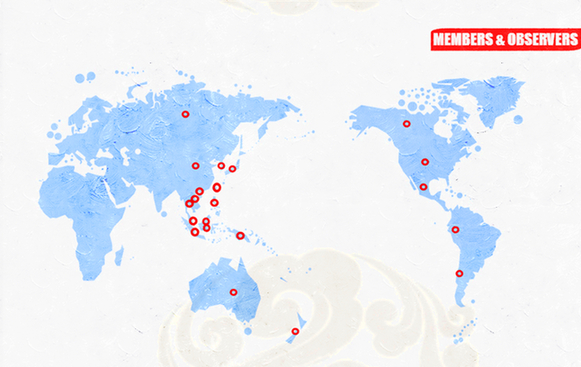Free trade across the Asia Pacific
- By Dan Steinbock
 0 Comment(s)
0 Comment(s) Print
Print E-mail China.org.cn, November 6, 2014
E-mail China.org.cn, November 6, 2014
In China, the theme of the impending APEC meeting has been defined as "shaping the future through Asia-Pacific partnership."
|
|
|
Asia Pacific Economic Cooperation (APEC) now has 21 members and 3 observers. |
Recently, Chinese Foreign Minister Wang Yi said that the APEC meeting has three goals: "First, to shape the future through Asia-Pacific Partnership; second, to build an open Asia-Pacific economy; and third to build the course of APEC development."
As China sees it, APEC is now standing "at a new historic starting point."
The rise of APEC
The idea of free trade has been around since 1966 when Japanese economist Kiyoshi Kojima spoke for a Pacific Free Trade agreement. At the time, Japan's wartime imperialism was still in fresh memory, while the United States was swept by the Vietnam quagmire.
As the Berlin Wall fell in Europe, APEC was established in response to the increasing interdependence of Asia-Pacific economies and the rise of regional trade blocs in other parts of the world.
In January 1989, Australian Prime Minister Bob Hawke called for more effective economic cooperation across the region. In November, that led to the first meeting of APEC in Canberra, which was attended by ministers from 12 countries.
At the time, APEC was seen as a countervailing force against Japanese domination in the region. The founding members also hoped to create new markets for their agricultural products and raw materials beyond Europe, where demand had begun to decline.
Today, APEC's membership has almost doubled to 21 countries, which account for some 40 percent of the world's population, almost 60 percent of the world economy, and nearly 50 percent of world trade.
APEC was created by small industrialized countries. Today, it is driven by the region's large emerging economies. At the same time, the dream for the Free Trade Area of the Asia Pacific (FTAAP) has taken off.






